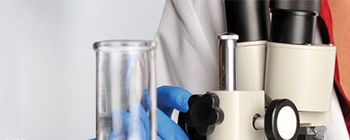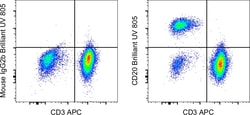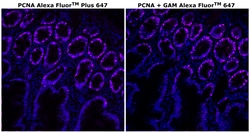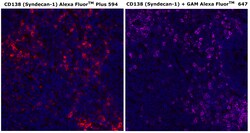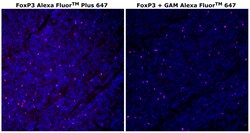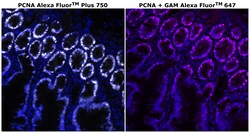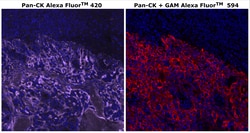Antibodies

Antibodies
Antibodies are glycoproteins that serve an essential role in the immune system to protects animals from infection, or the cytotoxic effects of foreign compounds, by binding with high affinity to invasive molecules; classified as primary or secondary.

Primary Antibodies
(131,901)

Secondary Antibodies
(2,371)

Isotype Controls and Standards
(623)

Antibody Panels and Kits
(60)
1
–
15
of
126,214
results
| Content And Storage | Store at 4°C short term. For long term storage, store at -20°C, avoiding freeze/thaw cycles. |
|---|---|
| Target Species | Human |
| Host Species | Rabbit |
| Conjugate | Unconjugated |
| Applications | Immunocytochemistry,Western Blot |
| Form | Liquid |
| Gene Accession No. | P68431, Q71DI3 |
| Isotype | IgG |
| Concentration | 0.5 mg/mL |
| Antigen | H3K27me2 |
| Gene Symbols | H3C1, H3C10, H3C12, H3C14, H3C15, H3C2, H3C7 |
| Regulatory Status | RUO |
| Purification Method | Affinity Chromatography |
| Gene Alias | dimethyl H3; di-methyl H3; Dimethyl Histone H3; di-methyl histone H3; Di-Methyl-H3 K27; Di-Methyl-H3 Lys27; Di-Methyl-Histone H3 K27; Di-Methyl-Histone H3 Lys27; Di-Tri-Methyl-Histone H3 K27; Di-Tri-Methyl-Histone H3 Lys27; H3; H3 histone; H3 histone family, member A; H3 histone family, member I; H3 histone family, member K; H3 histone family, member L; H3 histone family, member M; H3 histone, family 2; H3 histone, family 3A; H3 histone, family 3B; H3 histone, family 3B (H3.3B); H3 histone, family 3B.1; H3 histone, family 3C; H3 K27me2; H3.1-221; H3.1-291; H3.1-I; H3.2; H3.2-221; H3.2-614; H3.2-615; H3.2-616; H3.3A; H3.3B; H3.5; H3/A; H3/b; H3/d; H3/f; H3/i; H3/j; H3/k; H3/l; H3/M; H3/n; H3/o; H3-143; H3-291; H3-3A; H3-3B; h3-5; H3-53; H3-614; H3a; H3b; H3-B; H3C1; H3c10; H3c11; H3C12; H3C2; H3C3; H3C4; H3C6; H3C7; H3C8; H3f; H3-F; H3F1K; H3F2; H3F3; h3f3a; H3F3B; h3f3b.1; h3f3c; h3f3d; H3FA; H3FB; H3FC HIST1H3C; H3FD; H3FF; H3FH; H3FI; H3FJ; H3FK; H3FL; H3FM; H3FN; H3g; H3h; H3i; H3k27; H3K27me2/3; H3K27me2me3; H3Lys27me2; H3Lys27me2/3; H3Lys27me2me3; Hist1; HIST1H3A; HIST1H3B; Hist1h3c; HIST1H3D; Hist1h3e; HIST1H3F; Hist1h3g; HIST1H3H; HIST1H3I; HIST1H3J; HIST2H3A; Hist2h3b; HIST2H3C; Hist2h3c1; Hist2h3c2; Hist2h3c2-ps; Hist2h3ca1; Hist2h3ca2; HIST2H3D; histone 1, H3a; histone 1, H3b; histone 1, H3f; histone 1, H3h; histone 2, H3a; histone 2, H3c; histone 2, H3c2; histone 2, H3ca2; Histone 3; histone cluster 1, H3a; histone cluster 1, H3b; histone cluster 1, H3f; histone cluster 1, H3h; histone cluster 2, H3a; histone cluster 2, H3c; histone cluster 2, H3c2; histone cluster 2, H3c2, pseudogene; histone gene complex 1; histone H3; histone H3.1; Histone H3.2; histone H3.3; Histone H3.3C; histone H3.5; Histone H3/a; Histone H3/b; Histone H3/c; Histone H3/d; Histone H3/f; Histone H3/h; Histone H3/i; Histone H3/j; Histone H3/k; histone H3/l; Histone H3/m; histone H3/o; Histone H3K27; Histone H3K27me2; histone variant H3.5; hypothetical protein LOC550262; M32461; methyl Histone 3; methyl Histone H3; PP781; wu:fa25h06; wu:fa96g06; wu:fb07a08; wu:fb36f01; zgc:110292; zgc:174300; zgc:56193; zgc:56418; zgc:64222; zgc:86731 |
| Gene | H3C15 |
| Product Type | Antibody |
| Gene ID (Entrez) | 126961, 333932, 8350, 8356, 8357, 8358, 8968 |
| Formulation | PBS with 0.1% BSA, 30% glycerol and 0.09% sodium azide; pH 7.2 |
| Immunogen | Peptide corresponding to Human HIST1H3A (aa 24-31). |
| Classification | Polyclonal |
| Primary or Secondary | Primary |
CD20 Monoclonal Antibody (2H7), Brilliant Ultra Violet™ 395, eBioscience™, Invitrogen™
Mouse Monoclonal Antibody
| Content And Storage | 4°C, store in dark, DO NOT FREEZE! |
|---|---|
| Target Species | Human |
| Host Species | Mouse |
| Conjugate | Brilliant Ultraviolet 395 |
| Applications | Flow Cytometry |
| Form | Liquid |
| Isotype | IgG2b κ |
| Gene Accession No. | P11836 |
| Concentration | 5 μL/Test |
| Antigen | CD20 |
| Regulatory Status | RUO |
| Purification Method | Affinity chromatography |
| Gene Alias | AA960661; APY; ATOPY; B1; B-cell differentiation antigen Ly-44; B-lymphocyte antigen CD20; B-lymphocyte cell-surface antigen B1; B-lymphocyte surface antigen B1; Bp35; Cd20; CD20 antigen; CD20 cell surface protein; CD20 receptor; CVID5; EGK_06167; Fc epsilon receptor I beta chain; Fc Fragment of IgE high affinity I receptor for beta polypeptide; FCER1B; High affinity immunoglobulin epsilon receptor subunit beta; IgE Fc receptor subunit beta; IGEL; IGER; IGHER; LEU16; LEU-16; Leukocyte surface antigen Leu-16; Ly44; Ly-44; Lymphocyte antigen 44; membrane spanning 4-domains A1; membrane-spanning 4-domains subfamily A member 1; membrane-spanning 4-domains, subfamily A, member 1; membrane-spanning 4-domains, subfamily A, member 2; MGC3969; MS4A1; MS4A2; S7 |
| Gene | Ms4a1 |
| Product Type | Antibody |
| Gene ID (Entrez) | 931 |
| Formulation | PBS with BSA and 0.09% sodium azide; pH 7.2 |
| Classification | Monoclonal |
| Primary or Secondary | Primary |
| Clone | 2H7 |
HLA-ABC Monoclonal Antibody (W6/32), Brilliant Ultra Violet™ 615, eBioscience™, Invitrogen™
Mouse Monoclonal Antibody
| Content And Storage | 4°C, store in dark, DO NOT FREEZE! |
|---|---|
| Target Species | Human |
| Host Species | Mouse |
| Conjugate | Brilliant Ultraviolet 615 |
| Applications | Flow Cytometry |
| Form | Liquid |
| Isotype | IgG2a κ |
| Gene Accession No. | P01889, P04439, P10321 |
| Concentration | 5 μL/Test |
| Antigen | HLA-ABC |
| Regulatory Status | RUO |
| Purification Method | Affinity chromatography |
| Gene Alias | A29 protein; alpha chain of MHC class II; antigen presenting molecule; AS; Aw-33; Aw-74; B-4901; B-5001; Bw-47; Bw-50; class I MHC, HLA-B antigen; D6S204; epididymis secretory protein Li 83; H-2K; H2-K; H-2K(d); HEL-S-83; histocompatibility antigen; HLA A; HLA -B; HLA B-40011; HLA B44; HLA C; HLA class I antigen; HLA class I antigen HLA-B; HLA class I histocompatibility antigen C alpha chain; HLA class I histocompatibility antigen Cw-1 alpha chain; HLA class I histocompatibility antigen, A alpha chain; HLA class I histocompatibility antigen, A-1 alpha chain; HLA class I histocompatibility antigen, A-11 alpha chain-like; HLA class I histocompatibility antigen, A-30 alpha chain; HLA class I histocompatibility antigen, A-33 alpha chain; HLA class I histocompatibility antigen, A-74 alpha chain; HLA class I histocompatibility antigen, B alpha chain; HLA class I histocompatibility antigen, B-47 alpha chain; HLA class I histocompatibility antigen, B-50 alpha chain; HLA class I histocompatibility antigen, B-82 alpha chain; HLA class I histocompatibility antigen, C alpha chain; HLA class I histocompatibility antigen, Cw-1 alpha chain; HLA class I histocompatibility antigen, Cw-15 alpha chain; HLA class I histocompatibility antigen, Cw-18 alpha chain; HLA locus; HLA molecule; HLAA; HLA-A; HLA-A locus alpha 2 domain; HLA-A null; HLA-A11; HLA-A33; HLA-Aw33.1; HLAB; HLA-B; HLA-B 1502; HLA-B alpha chain; HLA-B alpha chain (B*2706); HLA-B alpha chain (B*5002); HLA-B alpha-chain; HLA-B*45ZJ; HLA-B15; HLA-B35; HLA-B35 antigen; HLA-B-3506; HLA-B39; HLA-B-3905; HLA-B49; HLA-B50; HLA-B55; HLA-B-5502; HLA-B-5602; HLA-B59; HLA-B61; HLA-Bw50 antigen; HLAC; HLA-C; HLA-C alpha chain; HLA-C alpha chain (HLA-Cw*15v); HLA-C alpha chain for Cw*18GB; HLA-C alpha-chain; HLA-C antigen; HLA-Cw; HLA-Cw*04GB; HLA-Cw*1702; HLA-Cw*18GB; HLA-Cw-1503; HLA-DQB1; HLA-DRB1; HLA-JY3; HLC-C; Human leukocyte antigen A; Human leukocyte antigen C; human leukocyte antigen-C alpha chain; hypothetical protein; lecocyte antigen B; leucocyte antigen A; Leukocyte Antigen; leukocyte antigen C; leukocyte antigen class I-A; leukocyte antigen class I-B; Leukoocyte Antigen; LOC100515902; LOW QUALITY PROTEIN: HLA class I histocompatibility antigen, A-11 alpha chain-like; lymphocyte antigen; major histocompatability complex B antigen; major histocompatibility antigen HLA-C; major histocompatibility complex, class I, A; major histocompatibility complex, class I, B; major histocompatibility complex, class I, C; MCH class I antigen; MGC184092; MGC7052; MHC; MHC 1; MHC antigen; MHC clas I antigen; MHC Class 1; MHC class 1 antigen; MHC class I; MHC class I alpha chain; MHC class I anitgen; MHC class I anti; MHC Class I antigen; MHC class I antigen A*30; MHC class I antigen A*33; MHC class I antigen A*74; MHC class I antigen B*47; MHC class I antigen B*50; MHC class I antigen B*82; MHC class I antigen Cw*15; MHC class I antigen Cw*18; MHC class I antigen GN00104; MHC class I antigen heavy chain; MHC class I antigen heavy chain HLA-C; MHC class I antigen HLA-A heavy chain; MHC class I antigen HLA-A33; MHC class I antigen HLA-B alpha chain; MHC class I antigen HLA-B heavy chain; MHC class I antigen null protein; MHC class I antigen SHCHA; MHC class I antigene; MHC class I histocompatibility antigen; MHC class I human leukocyte antigen; MHC class I molecule; MHC class I protein; MHC class II antigen; MHC class l antigen; MHC classI antigen; MHC HLA-ABC; MHC HLA-B cell surface glycoprotein; MHC HLA-B transmembrane glycoprotein; MHC HLA-B27d; MHC HLA-B27-HS; MHC HLA-B39N; MHC I HLA; MHC1; PSORS1; SPDA1; surface antigen; truncated class I antigen; truncated MHC class I antigen |
| Product Type | Antibody |
| Gene ID (Entrez) | 3105, 3106, 3107 |
| Formulation | PBS with BSA and 0.09% sodium azide; pH 7.2 |
| Classification | Monoclonal |
| Primary or Secondary | Primary |
| Clone | W6/32 |
CD20 Monoclonal Antibody (2H7), Brilliant Ultra Violet™ 805, eBioscience™, Invitrogen™
Mouse Monoclonal Antibody
| Content And Storage | 4°C, store in dark, DO NOT FREEZE! |
|---|---|
| Target Species | Human |
| Host Species | Mouse |
| Conjugate | Brilliant Ultraviolet 805 |
| Applications | Flow Cytometry |
| Form | Liquid |
| Isotype | IgG2b κ |
| Gene Accession No. | P11836 |
| Concentration | 5 μL/Test |
| Antigen | CD20 |
| Regulatory Status | RUO |
| Purification Method | Affinity chromatography |
| Gene Alias | AA960661; APY; ATOPY; B1; B-cell differentiation antigen Ly-44; B-lymphocyte antigen CD20; B-lymphocyte cell-surface antigen B1; B-lymphocyte surface antigen B1; Bp35; Cd20; CD20 antigen; CD20 cell surface protein; CD20 receptor; CVID5; EGK_06167; Fc epsilon receptor I beta chain; Fc Fragment of IgE high affinity I receptor for beta polypeptide; FCER1B; High affinity immunoglobulin epsilon receptor subunit beta; IgE Fc receptor subunit beta; IGEL; IGER; IGHER; LEU16; LEU-16; Leukocyte surface antigen Leu-16; Ly44; Ly-44; Lymphocyte antigen 44; membrane spanning 4-domains A1; membrane-spanning 4-domains subfamily A member 1; membrane-spanning 4-domains, subfamily A, member 1; membrane-spanning 4-domains, subfamily A, member 2; MGC3969; MS4A1; MS4A2; S7 |
| Gene | Ms4a1 |
| Product Type | Antibody |
| Gene ID (Entrez) | 931 |
| Formulation | PBS with BSA and 0.09% sodium azide; pH 7.2 |
| Classification | Monoclonal |
| Primary or Secondary | Primary |
| Clone | 2H7 |
CD38 Monoclonal Antibody (HIT2), Brilliant Ultra Violet™ 805, eBioscience™, Invitrogen™
Mouse Monoclonal Antibody
| Content And Storage | 4°C, store in dark, DO NOT FREEZE! |
|---|---|
| Target Species | Human |
| Host Species | Mouse |
| Conjugate | Brilliant Ultraviolet 805 |
| Applications | Flow Cytometry |
| Form | Liquid |
| Isotype | IgG1 κ |
| Gene Accession No. | P28907 |
| Concentration | 5 μL/Test |
| Antigen | CD38 |
| Regulatory Status | RUO |
| Purification Method | Affinity chromatography |
| Gene Alias | 2'-phospho-ADP-ribosyl cyclase; 2'-phospho-ADP-ribosyl cyclase/2'-phospho-cyclic-ADP-ribose transferase; 2'-phospho-cyclic-ADP-ribose transferase; ADPRC 1; ADPRC1; ADP-ribosyl cyclase 1; ADP-ribosyl cyclase/cyclic ADP-ribose hydrolase 1; cADPr hydrolase 1; Cd38; CD38 antigen; CD38 antigen (ADP-ribosyl cyclase / cyclic ADP-ribose hydrolase); CD38 antigen (p45); CD38 antigen p45; CD38 molecule; CD38H; Cd38-rs1; cluster of differentiation 38; cyclic ADP-ribose hydrolase 1; ecto-nicotinamide adenine dinucleotide glycohydrolase; I-19; NAD(+) nucleosidase; NAD+ nucleosidase; NIM-R5 antigen; T10 |
| Gene | CD38 |
| Product Type | Antibody |
| Gene ID (Entrez) | 952 |
| Formulation | PBS with BSA and 0.09% sodium azide; pH 7.2 |
| Classification | Monoclonal |
| Primary or Secondary | Primary |
| Clone | HIT2 |
CD40 Monoclonal Antibody (1C10), Brilliant Ultra Violet™ 661, eBioscience™, Invitrogen™
Rat Monoclonal Antibody
| Content And Storage | 4°C, store in dark, DO NOT FREEZE! |
|---|---|
| Target Species | Mouse |
| Host Species | Rat |
| Conjugate | Brilliant Ultraviolet 661 |
| Applications | Flow Cytometry |
| Form | Liquid |
| Isotype | IgG2a κ |
| Gene Accession No. | P27512 |
| Concentration | 0.2 mg/mL |
| Antigen | CD40 |
| Regulatory Status | RUO |
| Purification Method | Affinity chromatography |
| Gene Alias | AI326936; B cell surface antigen CD40; B cell-associated molecule; B-cell surface antigen CD40; Bp50; CD antigen CD40; Cd40; CD40 antigen; CD40 antigen (TNF receptor superfamily member 5); CD40 antigen, TNF receptor superfamily member 5; CD40 molecule; CD40 molecule, TNF receptor superfamily member 5; CD40L receptor; CDw40; GP39; HIGM1; I79_006806; IGM; IMD3; Immunoglobulin M; ImmunoglobulinM; membrane protein CD40; MGC9013; p50; receptor for ligand CD154; sCD40; soluble CD40; T-BAM; T-cell differentiation antigen; Tnfrsf5; TRAP; tumor necrosis factor receptor superfamily member 5; tumor necrosis factor receptor superfamily, member 5 |
| Gene | CD40 |
| Product Type | Antibody |
| Gene ID (Entrez) | 21939 |
| Formulation | PBS with BSA and 0.09% sodium azide; pH 7.2 |
| Classification | Monoclonal |
| Primary or Secondary | Primary |
| Clone | 1C10 |
KLRG1 Monoclonal Antibody (2F1), Brilliant Violet™ 605, eBioscience™, Invitrogen™
Syrian Hamster Monoclonal Antibody
| Content And Storage | 4°C, store in dark, DO NOT FREEZE! |
|---|---|
| Target Species | Mouse |
| Host Species | Syrian Hamster |
| Conjugate | Brilliant Violet 605 |
| Applications | Flow Cytometry |
| Form | Liquid |
| Isotype | IgG |
| Gene Accession No. | O88713 |
| Concentration | 0.2 mg/mL |
| Antigen | KLRG1 |
| Regulatory Status | RUO |
| Purification Method | Affinity chromatography |
| Gene Alias | 2F1; 2F1-Ag; CLEC15A; C-type lectin domain family 15 member A; C-type lectin domain family 15, member A; ITIM-containing receptor MAFA-L; killer cell lectin like receptor G1; killer cell lectin-like receptor subfamily G member 1; killer cell lectin-like receptor subfamily G, member 1; Klrg1; Mafa; MAFA-2F1; MAFAL; MAFA-L; MAFA-LIKE; MAFA-like receptor; Mast cell function-associated antigen; mast cell function-associated antigen (ITIM-containing); mast cell function-associated antigen 2F1; natural killer cell receptor |
| Gene | Klrg1 |
| Product Type | Antibody |
| Gene ID (Entrez) | 50928 |
| Formulation | PBS with BSA and 0.09% sodium azide; pH 7.2 |
| Classification | Monoclonal |
| Primary or Secondary | Primary |
| Clone | 2F1 |
Syrian Hamster IgG Isotype Control, Brilliant Violet™ 605, eBioscience™, Invitrogen™
Syrian Hamster Polyclonal Antibody
| Content And Storage | 4° C, store in dark, DO NOT FREEZE! |
|---|---|
| Target Species | Not Applicable |
| Host Species | Syrian Hamster |
| Conjugate | Brilliant Violet 605 |
| Applications | Control,Flow Cytometry |
| Form | Liquid |
| Isotype | IgG |
| Concentration | 0.2 mg/mL |
| Antigen | Syrian Hamster IgG |
| Regulatory Status | RUO |
| Purification Method | Affinity chromatography |
| Gene Alias | IgG; Immunoglobulin G; ImmunoglobulinG |
| Formulation | PBS with BSA and 0.09% sodium azide; pH 7.2 |
| Classification | Polyclonal |
F4/80 Monoclonal Antibody (BM8), Brilliant Violet™ 711, eBioscience™, Invitrogen™
Rat Monoclonal Antibody
| Content And Storage | 4°C, store in dark, DO NOT FREEZE! |
|---|---|
| Target Species | Mouse |
| Host Species | Rat |
| Conjugate | Brilliant Violet 711 |
| Applications | Flow Cytometry |
| Form | Liquid |
| Isotype | IgG2a κ |
| Gene Accession No. | Q61549 |
| Concentration | 0.2 mg/mL |
| Antigen | F4/80 |
| Regulatory Status | RUO |
| Purification Method | Affinity Chromatography |
| Gene Alias | ADGRE1; Adhesion G protein-coupled receptor E1; Adhesion G protein-coupled receptor E2; cell surface glycoprotein EMR1; cell surface glycoprotein F4/80; DD7A5-7; EGF-like module containing, mucin-like, hormone receptor-like 1; EGF-like module containing, mucin-like, hormone receptor-like sequence 1; EGF-like module receptor 1; EGF-like module-containing mucin-like hormone receptor-like 1; EGF-TM7; Emr1; EMR1 hormone receptor; F4/80; Gpf480; Ly71; lymphocyte antigen 71; TM7LN3 |
| Gene | ADGRE1 |
| Product Type | Antibody |
| Gene ID (Entrez) | 13733 |
| Formulation | PBS with BSA and 0.09% sodium azide; pH 7.2 |
| Classification | Monoclonal |
| Primary or Secondary | Primary |
| Clone | BM8 |
PCNA Monoclonal Antibody (PC10), Alexa Fluor™ Plus 647
PCNA Monoclonal Antibody (PC10), Alexa Fluor™ Plus 647
Invitrogen™ CD8 alpha Monoclonal Antibody (C8/144B), Alexa Fluor™ Plus 555
Mouse Monoclonal Antibody
| Content And Storage | 4°C, store in dark |
|---|---|
| Target Species | Human |
| Host Species | Mouse |
| Conjugate | Alexa Fluor Plus 555 |
| Applications | Immunohistochemistry (Paraffin) |
| Form | Liquid |
| Gene Accession No. | P01732, P10966 |
| Isotype | IgG1 κ |
| Concentration | 0.2 mg/mL |
| Antigen | CD8 alpha |
| Gene Symbols | Cd8a, CD8B |
| Regulatory Status | RUO |
| Purification Method | Affinity chromatography |
| Gene Alias | BB154331; CD8; CD8 alpha; CD8 alpha chain; CD8 alpha chain precursor; CD8 antigen; CD8 antigen 32 kDa chain; CD8 antigen 37 kDa chain; CD8 antigen alpha polypeptide; CD8 antigen alpha protein; CD8 antigen alpha protein precursor; CD8 antigen alpha-chain; CD8 antigen beta polypeptide; CD8 antigen beta polypeptide precursor; CD8 antigen beta-chain; CD8 antigen, alpha chain; CD8 antigen, alpha polypeptide; CD8 antigen, alpha polypeptide (p32); CD8 antigen, alpha-chain; CD8 antigen, beta chain; CD8 antigen, beta chain 1; CD8 antigen, beta polypeptide; CD8 antigen, beta polypeptide 1 (p37); CD8 antigen, beta-chain; CD8 beta; CD8 beta chain; CD8 beta-2; CD8a; CD8A antigen alpha; CD8a molecule; CD8A; T-cell surface glycoprotein; CD8alpha; CD8B; CD8b antigen; CD8b molecule; CD8b molecule pseudogene; Cd8b1; CD8beta; CD8BP; fCD8; LEU2; Leu-2; Leu2 T-lymphocyte antigen; leu-2a; Ly-2; LY3; Ly-3; Ly-35; Ly-B; Ly-C; Lymphocyte antigen 3; Lyt2; Lyt-2; Lyt-2.1 lymphocyte differentiation antigen (AA at 100); Lyt3; Lyt-3; MAL; membrane glycoprotein; membrane protein; OKT8 T-cell antigen; OX-8 membrane antigen; p32; P37; RHACD8-4; T cell co-receptor; T lymphocyte surface glycoprotein beta chain; T8 T-cell antigen; T-cell antigen Leu2; T-cell membrane glycoprotein Ly-3; T-cell surface glycoprotein; T-cell surface glycoprotein CD8 alpha chain; T-cell surface glycoprotein CD8 beta chain; T-cell surface glycoprotein Lyt-2; T-cell surface glycoprotein Lyt-3; T-cell surface molecule; T-lymphocyte differentiation antigen T8/Leu-2; type I transmembrane glycoprotein |
| Gene | CD8B |
| Product Type | Antibody |
| Gene ID (Entrez) | 925, 926 |
| Formulation | PBS with 0.5% BSA, 10% proprietary stabilizer and 0.05% sodium azide; pH 7.2 |
| Immunogen | A 13 amino acid synthetic peptide from the C-terminal cytoplasmic domain of alpha chain of human CD8 molecule. |
| Classification | Monoclonal |
| Primary or Secondary | Primary |
| Clone | C8/144B |
| Content And Storage | 4°C, store in dark |
|---|---|
| Target Species | Human |
| Host Species | Mouse |
| Conjugate | Alexa Fluor Plus 594 |
| Applications | Immunohistochemistry (Paraffin) |
| Form | Liquid |
| Gene Accession No. | P18827 |
| Isotype | IgG1 κ |
| Concentration | 0.2 mg/mL |
| Antigen | CD138 |
| Gene Symbols | Sdc1 |
| Regulatory Status | RUO |
| Purification Method | Protein A |
| Gene Alias | AA408134; AA409076; CD antigen 138; CD138; CD138 antigen; heparan sulfate proteoglycan fibroblast growth factor receptor; HSPG; sCD138; SDC; Sdc1; soluble CD138; Sstn; syn-1; Synd; SYND1; Synd-1; SYNDECA; syndecan; syndecan 1; syndecan proteoglycan 1; Syndecan1; syndecan-1; synstatin |
| Gene | Sdc1 |
| Product Type | Antibody |
| Gene ID (Entrez) | 6382 |
| Formulation | PBS with 0.5% BSA, 10% proprietary stabilizer and 0.05% sodium azide; pH 7.2 |
| Immunogen | A mixture of U266 and XG-1 human myeloma cell lines. |
| Classification | Monoclonal |
| Primary or Secondary | Primary |
| Clone | MI15 |
FOXP3 Monoclonal Antibody (236A/E7), Alexa Fluor™ Plus 647
FOXP3 Monoclonal Antibody (236A/E7), Alexa Fluor™ Plus 647
| Content And Storage | 4°C, store in dark |
|---|---|
| Target Species | Human |
| Host Species | Mouse |
| Conjugate | Alexa Fluor Plus 750 |
| Applications | Immunohistochemistry (Paraffin) |
| Form | Liquid |
| Gene Accession No. | P12004 |
| Isotype | IgG2a |
| Concentration | 0.2 mg/mL |
| Antigen | PCNA |
| Gene Symbols | Pcna |
| Regulatory Status | RUO |
| Purification Method | Purified |
| Gene Alias | ATLD2; cb16; Cyclin; DNA polymerase delta auxiliary protein; etID36690.10; fa28e03; fb36g03; HGCN8729; hypothetical protein LOC515499; MGC8367; Pcna; pcna protein; Pcna/cyclin; PCNAR; POL30; Proliferating cell nuclear antigen; wu:fa28e03; wu:fb36g03; YBR0811; YBR088C |
| Gene | Pcna |
| Product Type | Antibody |
| Gene ID (Entrez) | 5111 |
| Formulation | PBS with 0.5% BSA, 10% proprietary stabilizer and 0.05% sodium azide; pH 7.2 |
| Immunogen | Rat recombinant PCNA polypeptides. |
| Classification | Monoclonal |
| Primary or Secondary | Primary |
| Clone | PC10 |
| Content And Storage | 4°C, store in dark |
|---|---|
| Target Species | Human |
| Host Species | Mouse |
| Conjugate | Alexa Fluor 420 |
| Applications | Immunohistochemistry (Paraffin) |
| Form | Liquid |
| Gene Accession No. | P02533, P02538, P04264, P05783, P05787, P08727, P08729, P08779, P12035, P13645, P13646, P13647, P19012, P19013, P35908, Q01546, Q04695, Q7Z794 |
| Isotype | IgG1 |
| Concentration | 0.2 mg/mL |
| Antigen | Cytokeratin Pan Type I/II |
| Gene Symbols | KRT1, KRT10, KRT13, KRT14, KRT15, KRT16, KRT17, KRT18, KRT19, KRT2, KRT3, KRT4, KRT5, Krt6a, KRT7, KRT76, KRT77, KRT8 |
| Regulatory Status | RUO |
| Purification Method | Affinity chromatography |
| Gene Alias | 2310016L08Rik; 3300001P10Rik; 39.1; 40-kDa keratin intermediate filament; 47 kDa cytokeratin; 56 kDa cytokeratin; 57kd keratin; 57kDa keratin; 58 kDa cytokeratin; 60-kDa keratin; 63kDa Keratin; 65 kDa cytokeratin; 67 kDa cytokeratin; AA960620; adult keratin; AI324768; AI528832; AI626930; AI663979; AL022697; alpha keratin; AU019895; AW108092; AW146334; basic epidermal type II cytokeratin (carboxy-terminal region, clone pUF164); BB005427; BCIE; BIE; Card2; cell proliferation-inducing gene 46 protein; CK 2e; CK1; CK-1; CK10; CK-10; CK13; CK-13; CK14; CK-14; CK15; CK-15; CK16; CK-16; CK-17; CK18; CK-18; CK19; CK-19; CK-1B; CK-2e; CK3; CK-3; CK4; CK-4; CK5; CK-5; ck55; CK6A; CK-6A; CK6C; CK-6C; CK6D; CK-6D; CK-6E; CK7; CK-7; CK8; CK-8; CYK18; CYK4; CYK8; CYKER; cytokeratin 1; cytokeratin 10; cytokeratin 13; cytokeratin 14; cytokeratin 15; cytokeratin 16; cytokeratin 18; cytokeratin 19; cytokeratin 3; cytokeratin 4; cytokeratin 5; cytokeratin 6A; cytokeratin 6C; cytokeratin 6D; cytokeratin 7; cytokeratin 8; cytokeratin 8 (370 AA); cytokeratin endo A; Cytokeratin endo B; cytokeratin otokeratin; cytokeratin type II; cytokeratin type II, component Ib/c; cytokeratin type II, component III; cytokeratin VIB; cytokeratin VII; cytokeratin-1; Cytokeratin-10; cytokeratin-13; Cytokeratin-14; cytokeratin-15; Cytokeratin-16; cytokeratin-17; Cytokeratin-18; cytokeratin-19; Cytokeratin-1B; Cytokeratin-2e; cytokeratin-3; Cytokeratin-4; cytokeratin-5; Cytokeratin-6A; cytokeratin-6B; cytokeratin-6C; Cytokeratin-6D; cytokeratin-6E; cytokeratin-7; Cytokeratin-8; cytokeratin-A; Cytoskeletal 57 kDa keratin; D130054E02Rik; D15Wsu77e; DDD; DDD1; ear specific cytokeratin; EBS2; ebs3; ebs4; EGK_03684; EGK_03685; EHK; EHK1; Endo B; EndoA; EndoC; epidermal keratin 10; epidermal keratin VII; epidermolysis bullosa simplex 2 Dowling-Meara/Kobner/Weber-Cockayne types; epidermolysis bullosa simplex, Dowling-Meara, Koebner; epidermolytic hyperkeratosis 1; epidermolytic hyperkeratosis; keratosis palmaris et plantaris; epithelial keratin 1; epithelial keratin 10; epithelial keratin 2e; Epithelial keratin-1; Epithelial keratin-2e; EPPK; fgk; fin and gill keratin; FNEPPK; focal non-epidermolytic palmoplantar keratoderma; GK-19; Hair alpha protein; HMWCK; Hom s 5; I79_019823; I79_021074; I79_023185; I79_024335; intermediate filament protein; K1; K10; K13; K14; K15; K16; K17; K18; K19; K1B; K1C1; K1CO; K1CP; K1CS; K2C7; K2C8; K2e; K3; K3 keratin; K4; K5; K6A; K6a keratin; K6C; K6D; K7; K77; K8; Ka10; Ka13; Ka14; Ka15; Ka16; Ka17; Ka19; kamp-keratin derived antimicrobial peptide; Kb1; Kb2; Kb4; Kb7; KDAMP; KER1; Ker10; Ker2; KERA; keratin; keratin 1; keratin 1 (epidermolytic hyperkeratosis); keratin 1, type II; keratin 10; keratin 10 (epidermolytic hyperkeratosis); keratin 10 (epidermolytic hyperkeratosis; keratosis palmaris et plantaris); keratin 10, type I; keratin 10, type I L homeolog; keratin 10, type I S homeolog; keratin 12, gene 2 S homeolog; keratin 13; keratin 13, type I; keratin 13, type I S homeolog; keratin 14; keratin 14 (epidermolysis bullosa simplex, Dowling-Meara, Koebner); keratin 14, type I; keratin 14, type I L homeolog; keratin 15; keratin 15, gene 1 S homeolog; keratin 15, type I; keratin 16; keratin 16 (focal non-epidermolytic palmoplantar keratoderma); keratin 16, type I; keratin 16, type I S homeolog; keratin 17; keratin 17 L homeolog; keratin 17, type I; keratin 17, type I L homeolog; keratin 18; keratin 18, type I; keratin 19; keratin 19 S homeolog; keratin 19 S homeolog; keratin 19; keratin 19, type I; Keratin 1B; keratin 2; keratin 2 (epidermal ichthyosis bullosa of Siemens); keratin 2 epidermis; keratin 2, type II; keratin 24; keratin 2A; keratin 2A (epidermal ichthyosis bullosa of Siemens); keratin 3; keratin 3, type II; keratin 4; keratin 4, type II; keratin 5; keratin 5 (epidermolysis bullosa simplex Dowling-Meara/Kobner/Weber-Cockayne types); keratin 5 (epidermolysis bullosa simplex, Dowling-Meara/Kobner/Weber-Cockayne types) |
| Gene | KRT16 |
| Product Type | Antibody |
| Gene ID (Entrez) | 374454, 3848, 3849, 3850, 3851, 3852, 3853, 3855, 3856, 3858, 3860, 3861, 3866, 3868, 3872, 3875, 3880, 51350 |
| Formulation | PBS with 0.5% BSA, 10% proprietary stabilizer and 0.05% sodium azide; pH 7.2 |
| Immunogen | Human epidermal keratin. |
| Classification | Cocktail |
| Primary or Secondary | Primary |
| Clone | AE1/AE3 |
